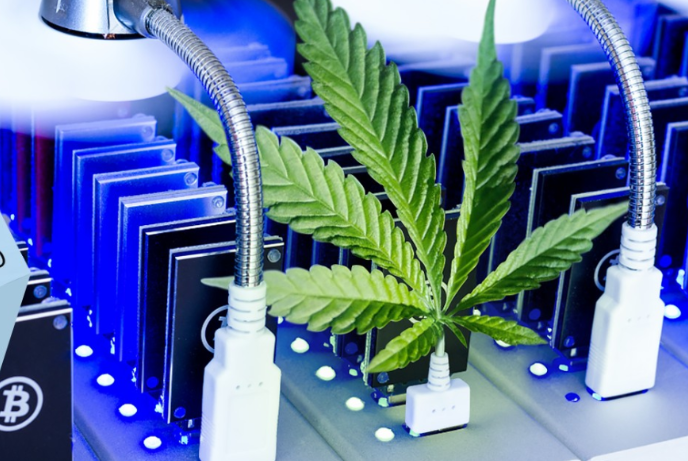Comparing the Profitability of Bitcoin Mining and Marijuana Cultivation
Cryptocurrency mining is a largely automated process that uses computing power to verify transactions. This process consumes a lot of electricity—an enormous amount, in fact. Miners are always searching for the cheapest electricity, and sometimes they even steal it. There’s a running joke that if the police were to raid a house today expecting to find a marijuana grow operation, they’d probably discover an illegal Bitcoin mining farm instead. This joke isn’t baseless: electricity consumption is one of the main ways authorities detect both marijuana grows and illegal mining farms, and energy companies often voluntarily provide this information to the police.
All of this inspired Jordan Pearson, a journalist at Motherboard, to compare the energy consumption of mining farms and marijuana grow operations.
Energy Consumption: Mining vs. Growing
According to a 2014 report by the Northwest Power and Conservation Council (NPCC) in the U.S., the biggest electricity demands in indoor marijuana cultivation are lighting (38%) and air conditioning (21%). The same report states that indoor marijuana production can consume between 4,000 and 6,000 kWh per kilogram of product. In January 2018, CBC reported that producing 450 grams of marijuana requires about 2,000 kWh, which aligns with the NPCC data.
Based on these estimates, the journalist tried to calculate how expensive it is to grow marijuana in terms of energy consumption. In New York, the cost of electricity in February was 19.8 cents per kWh. Consuming 5,000 kWh would cost just under $1,000. With that amount of electricity, you could power five average American homes (which use about 900 kWh per month each). Or, you could grow one kilogram (35 ounces) of marijuana and sell it for around $12,000.
Bitcoin Mining: Energy and Costs
So, one kilogram of marijuana is worth about two bitcoins ($14,800). Now, let’s see how much energy is needed to mine that amount of cryptocurrency.
According to a very optimistic estimate by Digiconomist (assuming every miner uses the most energy-efficient equipment), the entire Bitcoin network uses 32 terawatt-hours per year, or 32 billion kWh. Since a new block is found roughly every ten minutes, about 52,560 blocks are added to the Bitcoin network each year. Dividing the total annual energy consumption by the number of blocks gives us about 608,828 kWh needed to find one block.
The reward for finding a block is currently 12.5 bitcoins. If we divide the energy required to find a block by this number and multiply by two, we see that mining two bitcoins (worth $14,800) requires just under 100,000 kWh. At New York electricity rates, this would cost about $19,000. At the rates preferred by industrial miners (say, 2 cents per kWh), it would cost around $2,000.
Conclusion
These calculations are rough estimates, but they show that, assuming equal revenue, mining bitcoin requires several times more money than growing marijuana.



